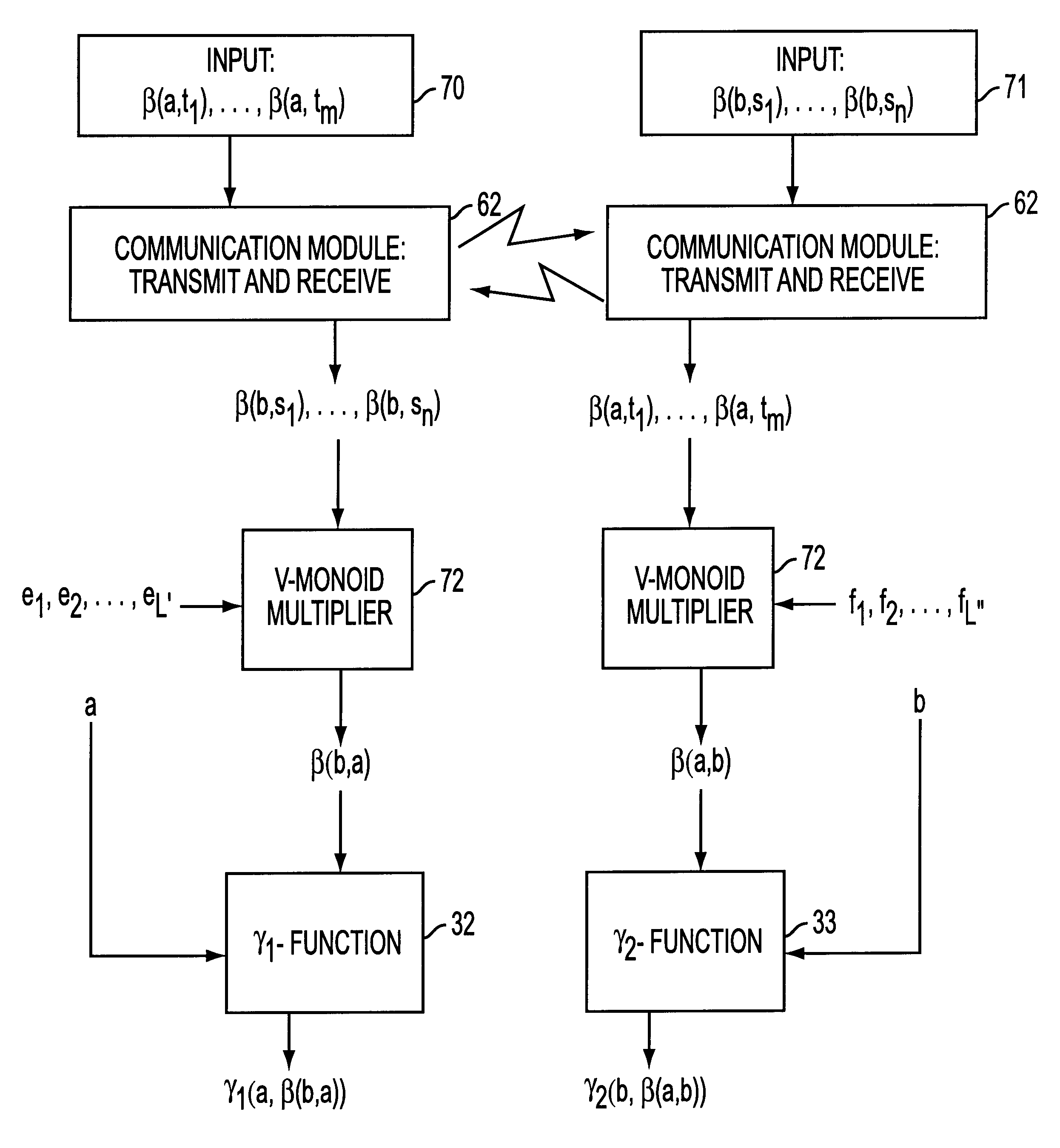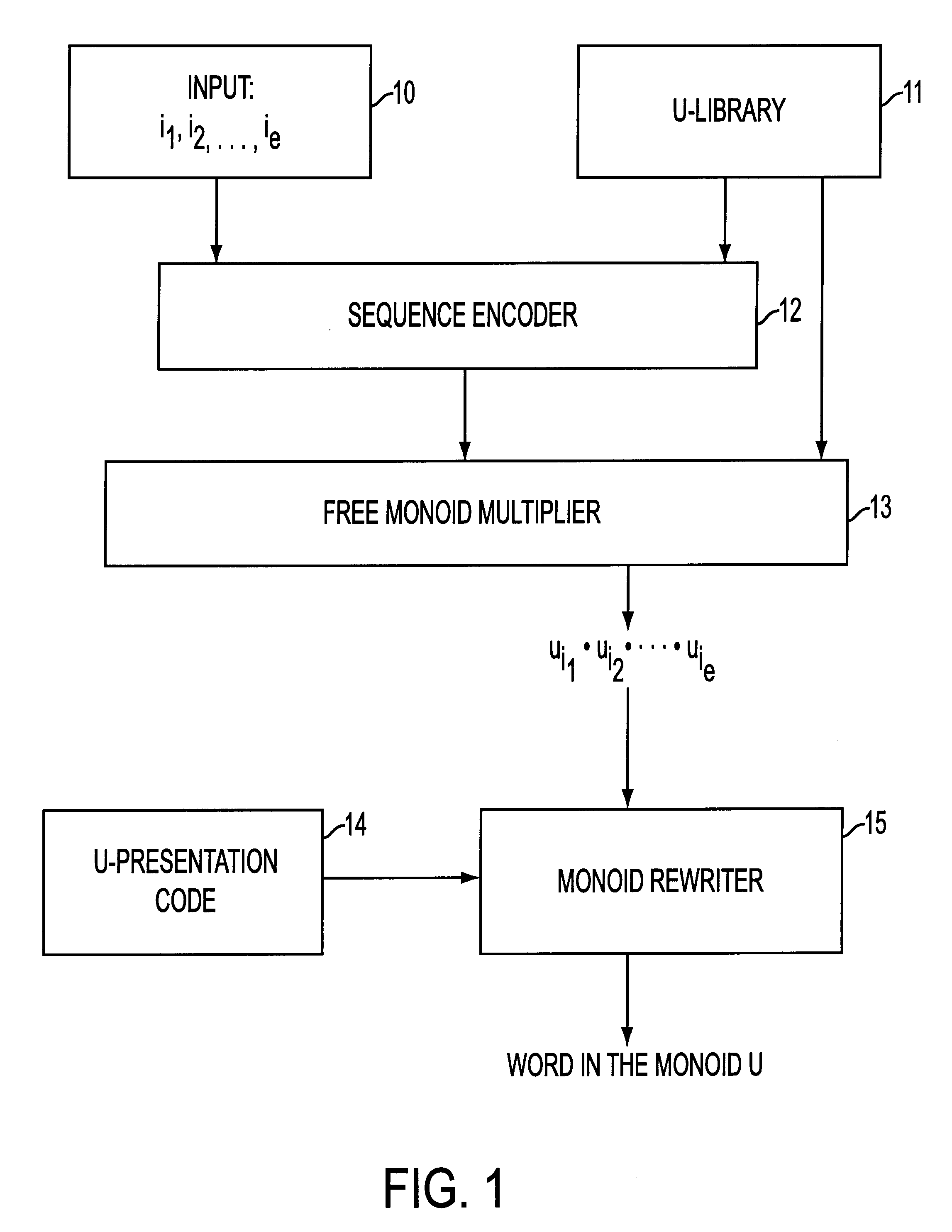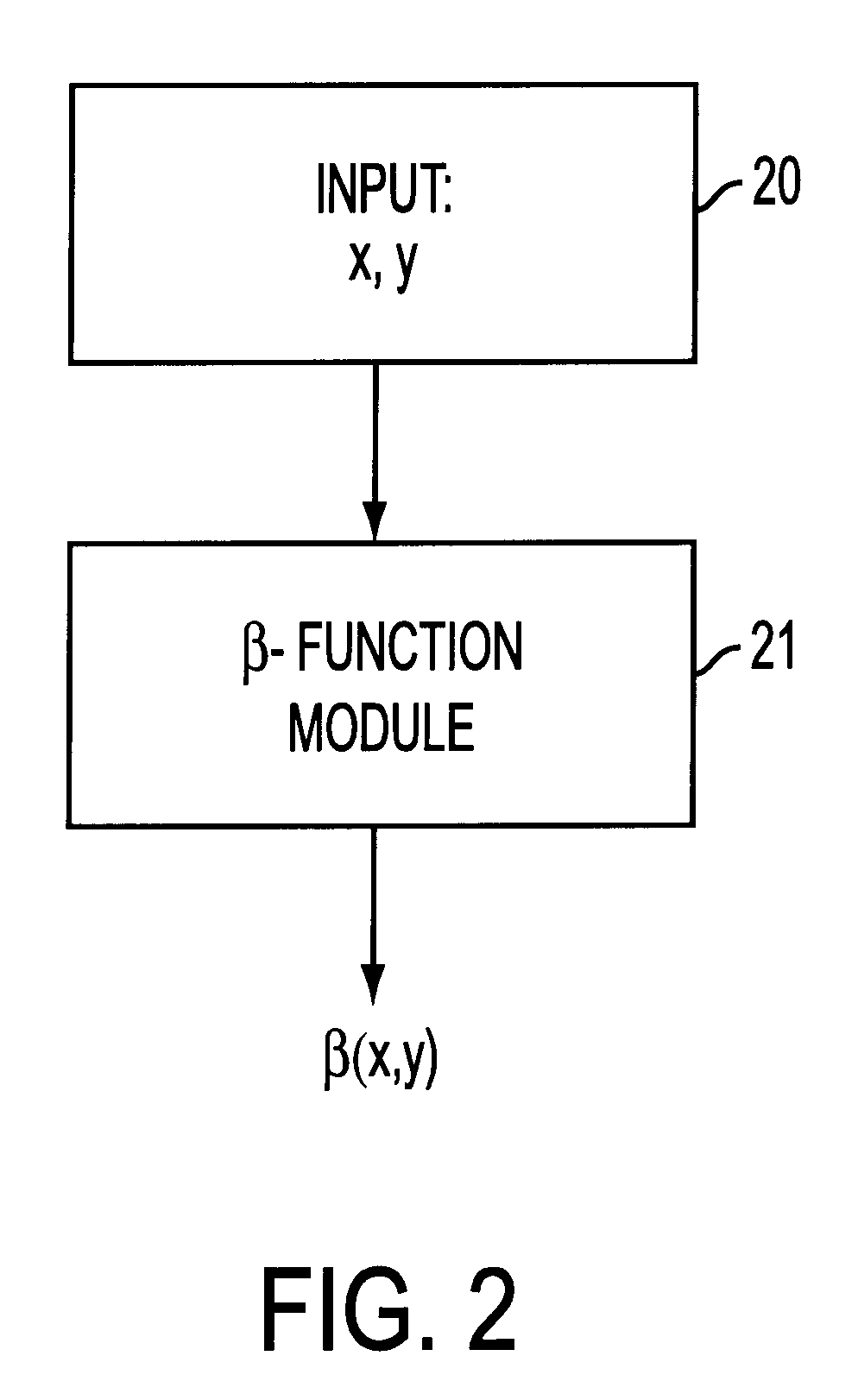Method and apparatus for cryptographically secure algebraic key establishment protocols based on monoids
a cryptographicly secure and algebraic key technology, applied in the field of algebraic key establishment protocols, can solve problems such as difficult problems
- Summary
- Abstract
- Description
- Claims
- Application Information
AI Technical Summary
Benefits of technology
Problems solved by technology
Method used
Image
Examples
example 2
An example of a key transport protocol for monoids is given when the monoid U is the braid group with N generators (see Example 1), U=M, is the same as the message space, and the action is defined by
u(m)=u.multidot.m(braid multiplication) for all u.epsilon.U,m.epsilon.M.
Note that in this example inverses of elements are not required so that G is viewed as having only the structure of a monoid. A polynomial time algorithm for comparing words in the braid group is given in Patrick Dehornoy, "A fast method for comparing braids," Advances in Mathematics 125 (1997), pages 200-235 and also in Joan S. Birman, Ki Hyoung Ko, and Sang Jin Lee, "A new approach to the word and conjugacy problems in the braid groups," to appear in Advances in Mathematics.
With these choices, the key transport protocol is depicted in FIG. 11 and Dehorney's or the Birman-Ko-Lee algorithm can be used as a basis for the Compare and Choose Module 114.
example 3
An example of a key transport protocol for groups is given when the group G is the braid group with N generators (see Example 1), G=M is the same as the message space, and the action is defined by braid group conjugation:
g(m)=gmg.sup.-1, for all g.epsilon.G,m.epsilon.M.
A polynomial time algorithm for computing canonical forms in the braid group is given in Joan S. Birman, Ki Hyoung Ko, and Sang Jin Lee, "A new approach to the word and conjugacy problems in the braid groups," to appear in Advances in Mathematics.
With these choices, the key transport protocol is depicted in FIG. 12 and the Birman-Ko-Lee algorithm can be used as a basis for the Canonical Form Module 124.
example 4
Another example of a key transport protocol for groups is given when G is the braid group with N generators (see Example 1), M is the free group generated by the set {a.sub.1, . . . , a.sub.N }, and the action of G on M is given as follows (see Emil Artin, "Theorie der Zopfe," Hamb. Abh. 4 (1925), pages 47-72): for i=1, . . . , N,
x.sub.i (a.sub.i)=a.sub.i+1, x.sub.i (a.sub.i+1)=a.sub.i+1.sup.-1 a.sub.i a.sub.i+1
x.sub.i (a.sub.j)=a.sub.j for j=1, . . . ,i-1,i+2, . . . ,N.
In this instance the algorithm for the canonical form module 124 is simply free reduction in the free group m, and the algorithm for group action 123 is generally exponential in the word length of the acting braid group element.
PUM
 Login to View More
Login to View More Abstract
Description
Claims
Application Information
 Login to View More
Login to View More - R&D
- Intellectual Property
- Life Sciences
- Materials
- Tech Scout
- Unparalleled Data Quality
- Higher Quality Content
- 60% Fewer Hallucinations
Browse by: Latest US Patents, China's latest patents, Technical Efficacy Thesaurus, Application Domain, Technology Topic, Popular Technical Reports.
© 2025 PatSnap. All rights reserved.Legal|Privacy policy|Modern Slavery Act Transparency Statement|Sitemap|About US| Contact US: help@patsnap.com



